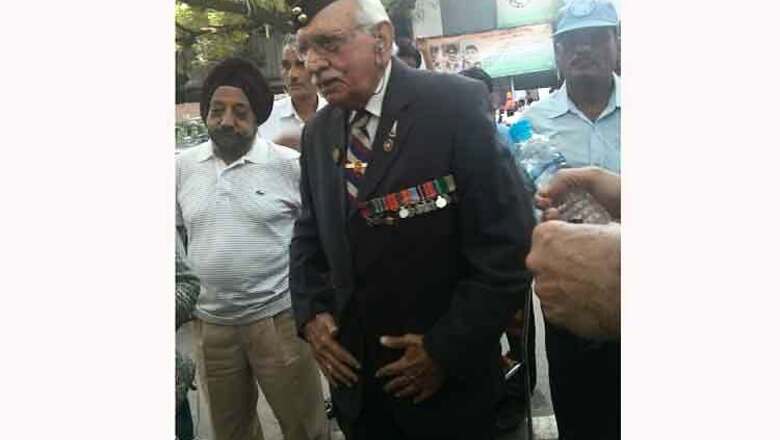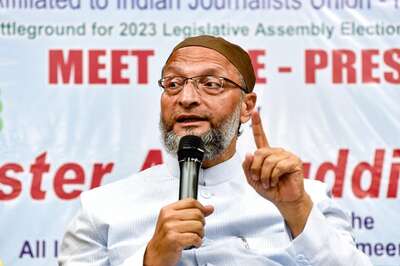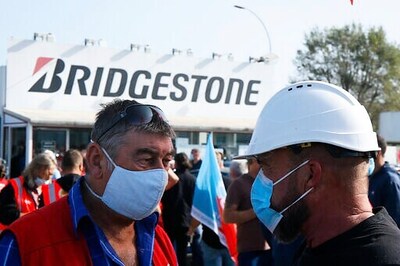
views
New Delhi: Brigadier (retired) DP Nayar joined the Indian Army just a few years after Independence in 1952 after passing out of the first course of the National Defence Academy. He took part in the 1961 Goa Liberation and the 1965 India-Pakistan war but there is one battle that he is still fighting.
The former Army officer, a winner of 13 gallantry medals and twice Mention in Nation Dispatches, was invited by the government for 50th anniversary ceremony of the 1965 war at the Amar Jawan Jyoti in India Gate but the 85-year-old veteran soldier gave it a miss to be at Jantar Mantar to show his solidarity with defence veterans, war widows and retired jawans who have been demanding One Rank One Pension.
Even as his colleagues and other retired soldiers have been protesting since 1982 for One rank One Pension, the retired Brigadier, who retired from the Indian Army in 1984, is unable to understand why is there such a long delay in the implementation of the proposed scheme.
Questioning the Narendra Modi government, Brigadier Nayar, commissioned into the 4 Rajput and in 1966 also raised 9 Rajput, asked, "How long will the government take to find a solution? Is there any time limit? Whoever is in the authority must think himself as servant of organisation and not a ruler."
Remembering the 1965 war, he said, "It did not start at the spur of the moment but was a deliberately planned affair on part of Pakistan. In the beginning of 1965, Pakistan indulged in some adventure and started some ingress in Rann of Kutch but didn't succeed much. Things were resolved after negotiations.
"In April-May, Pakistan started aggressiveness in Kargil sector and at that time the 4 Rajput battalion was posted there. Two posts 13,620 and 15,000 feet above sea level were strongly dominated by Pakistan. The National Highway from Srinagar, Uri, Drass, Kargil, Leh that connected to their rear from Gilgit, Skardu and Kargil were dominated by them. Their ability to dominate and periodic mischief was very worrisome and it was finally decided to eliminate this problem," he said.
"My battalion was ordered to capture these posts and on the night of May 16-17, Major BS Randhawa with his company and myself were to attack and capture these posts by May 17 morning. The terrain in the part of the area is exceptionally rigid, steep and mountainous desert and at night the temperature is below freezing point," said Brigadier Nayar, who was a Major during the war.
"The reconnaissance had revealed that other than Army positions, there were two peaks which were under occupation. Therefore it was decided from tactical point of view that to attack from behind enemy lines would be a better proposition. Accordingly this plan was executed utilising the principle of stealth and surprise and it was a blooding fight. With undaunted courage and great leadership qualities of all commanders the objective was successfully captured," the retired Army officer added.


















Comments
0 comment